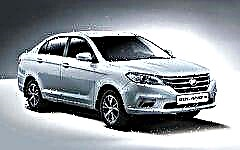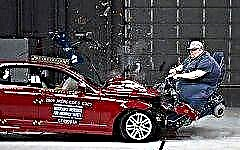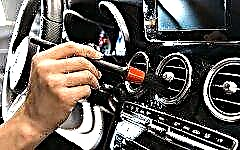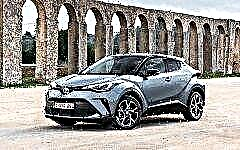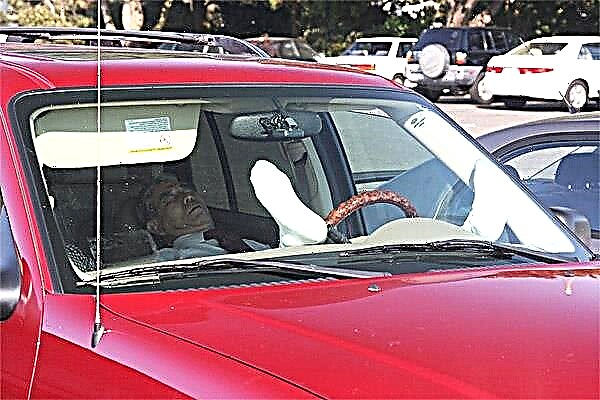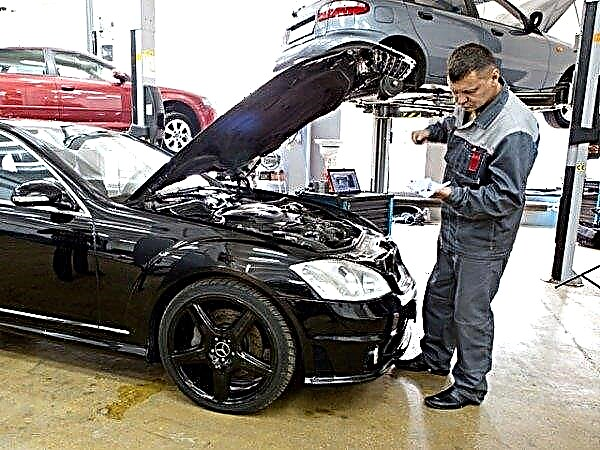
The content of the article:
- We check the electronic filling of the car
- Undercarriage of the machine
- Controlling tire pressure
- Coolants and car cleaning after winter
- Air conditioning, cabin filter, wipers and paintwork
- What else needs to be done to get the car ready for summer
After a snowy and cold winter, the long-awaited summer has come to us again! As always, the birds returning from warm countries brought with them pleasant weather surprises. The hot summer sun is becoming more and more confident. Motorists have a need to prepare their "iron horse" for summer trips.
Very soon hot weather will be established in most regions for 2-3 months. To avoid damage due to heat, you should take care of the technical condition of the car right now. We still have time to check and get the car ready for the hot summer months.
Some tips are quite simple, but this does not mean at all that you can simply dismiss them - you will greatly regret it, having received a breakdown in 30-degree heat. Some people believe that winter frosts do more damage to the car than summer weather, but this is not entirely true.
Electrical and electronics

The high temperature causes the wires to expand, which can sometimes lead to broken contacts. An electrical check is recommended before summer travel. The power section and the ignition system deserve special attention. Poor connection of the contacts may result in fire.
Candles should be changed every 20-30 thousand km.
Heat has a negative effect on the "health" of the battery. We recommend that you sometimes fully charge and fully discharge the battery. Before a long trip, it is worth checking the charge. If it deviates from the numbers recommended by the manufacturer, you should think about changing it.
Chassis

When driving on the highway, the headwind blows and cools the underbody of the vehicle. But in the parking lot, direct sunlight heats up and has a destructive effect on all rubber parts (silent blocks, hoses, seals, etc.). These "invisible" breakdowns can be identified when checked at the stand. Service station specialists can diagnose pads, discs, brake fluid level.
Elementary signs of an unsatisfactory condition of the brakes can be detected independently. For example, pressing the brake pedal too lightly or vice versa hard. Displacement of the brake pedal up or down from its normal position. The appearance of a luminous indicator on the dashboard should remove all questions - this means that it is time to go to the service station.
Tire pressure monitoring

Even asphalt pavement melts at high temperatures. The scorching sun can harm tires as well. There is a dependence - an increase in temperature for every 10 degrees increases the tire pressure by 0.07 atm. It is worth regularly monitoring the tire pressure using a pump with a pressure gauge and checking it with the recommended manufacturer of your car. Inflated tire pressure leads to accelerated wear. In addition, an uncontrolled increase in pressure leads to the destruction of the rubber. A long ride in the summer heat causes the rubber to heat up and the pressure builds up. To get the correct numbers, after a long trip, you should wait a few hours, and only then measure the tire pressure.
When operating a car throughout the year, we necessarily find ourselves in the season of cracks and holes - it is simply impossible not to fall into these "traps". Any pothole in the road can damage the wheel rim. Over time, discs accumulate hard-to-see dents, which contribute to the rapid wear of the rubber. The condition of the disks should be carefully monitored, if a problem is found, you should contact a workshop that provides services for the repair and restoration of disks.
The accessible parts of the car's electrical package require mandatory inspection. Check the battery mount, it could have loosened during the winter - this could damage the battery.
Coolant and cleaning after winter

Check the condition of the cooling system. In hot weather, the performance of the engine cooling system is of utmost importance. A malfunctioning system or insufficient coolant can cause overheating and engine damage.
On the shelves of car markets there is a large selection of coolants: concentrated solutions for self-adjustment to the desired consistency using distilled water or ready-to-use formulations. Before making the final choice, it is worth familiarizing yourself with the recommendations of the automaker in the manual and service book. It is best to take the recommended brand of coolant. But if this is not possible, then you should take as close as possible to the recommended brand.
In winter, our roads are diligently covered with sand, salt mixtures, chemically active anti-icing reagents. They act aggressively on the car - traces of winter "gifts" from road builders can remain on the bottom and drive shafts. To prevent the development of corrosion and oxidation of parts, the remnants of winter contamination should be washed.
During the winter, a lot of dust and dirt accumulates everywhere. The engine compartment deserves special attention. For free air access to the engine, the radiator should be cleaned.
Air conditioning, cabin filter, wipers and paintwork

Before the onset of really hot days, you should check the operation of the system responsible for the microclimate in the cabin. Unfortunately, the air conditioner is remembered only with the onset of heat. And then it turns out that it does not cool the air in the cabin. It is better to service the air conditioner before you get stuck in a traffic jam in a hot cabin.
The most common reason for the incorrect operation of air conditioners is an insufficient amount of freon (refrigerant). A specialized workshop will help to correct the situation, which has the ability to diagnose and refuel the car air conditioner.
When using an air conditioner, you should remember the recommendations of doctors that the temperature difference between the cabin and the street should not be more than 8 degrees. Cold air directed to the legs can cause seizures, which is incompatible with driving. In addition, a running air conditioner increases fuel consumption by 20%.
The cabin filter is also required to be replaced. This is especially true for people prone to allergic hyperreactions. Pollen or dust entering the passenger compartment can cause allergies. But if the filter is in a satisfactory condition, then it makes no sense to change it "prophylactically".
Winter meteorological conditions adversely affect the "health" of the janitors. In the spring you will not immediately think that they need to be replaced. As a result of low temperatures and freezing, the rubber coating cracks and wears out. And in summer showers, it is the wipers that provide visibility and safety. Replacing them will not be difficult - a consultant in the store will select the right one, and according to the instructions, it is very easy to replace the wipers.
Aggressive ultraviolet and infrared rays negatively affect the paintwork of the car body. To prevent premature aging of the coating after a car wash, its body must be covered with a special protective wax-based compound.Leather interiors also require a protective treatment to prevent cracking.
"Gentleman's set"

No matter how you and the car are ready for summer surprises, having a minimum of necessary things on the road with you will allow you to meet fully armed with any road "surprises". Before traveling, check that you have a phone and its charger, a pump (ideally a foot pump in case of a breakdown in the car's electrical system), a bottle of drinking water and a minimum set of tools. A proven and complete first aid kit is required.
Most systems of a modern passenger car can only be checked by professionals with special equipment. But there is something else you can control yourself - for example, the process fluids of a car. Leakage of fluids in a modern car is a rare phenomenon, but it is still worth checking their condition, especially if you have a long journey. Moreover, it will not be difficult.
The tire pressure can also be monitored independently. If your pump doesn't have a pressure gauge, get one. It is better to buy an inexpensive pressure gauge than to purchase a new set of tires later because of the accelerated wear of the old one due to increased tire pressure.
Diagnostics of more complex systems should be carried out by specialists of a car service of a dealership or a car repair shop - modern cars are not much inferior in complexity to space ships of twenty years ago.
The time intervals between services have increased significantly; car manufacturers recommend that maintenance be carried out every 15,000 km. Some models do not even provide for the possibility of self-checking the oil level - there is no traditional dipstick, and the data from the sensor can only be obtained using special equipment. It is unrealistic to repair many units containing liquids on your own, therefore, the possibility of checking the levels is not provided.
There are only a few days left before the onset of a real sultry summer. Therefore, you should not delay preparing the car for summer trips, so as not to end up on a hot track or in a stuffy traffic jam with a faulty car. The suggested tips are simple, but they will save you from stress and financial losses.

